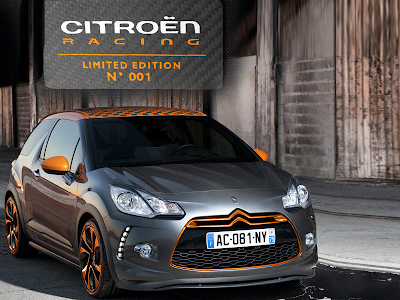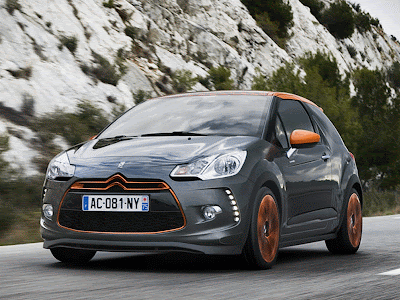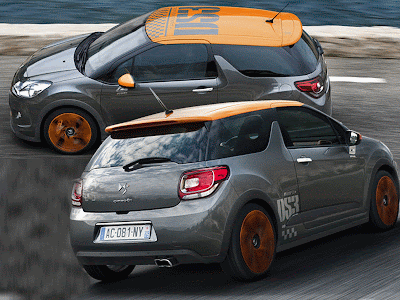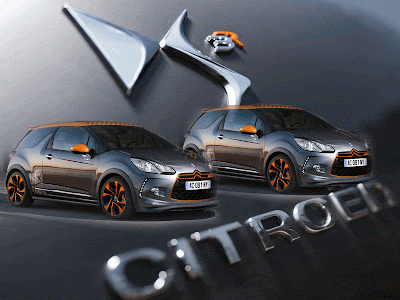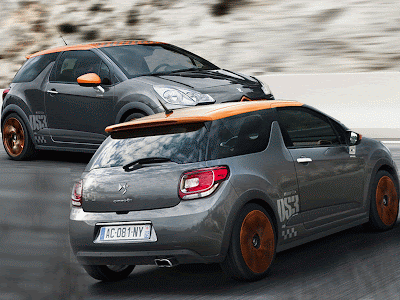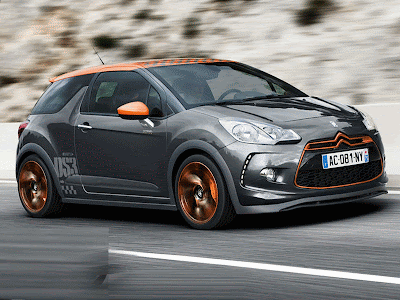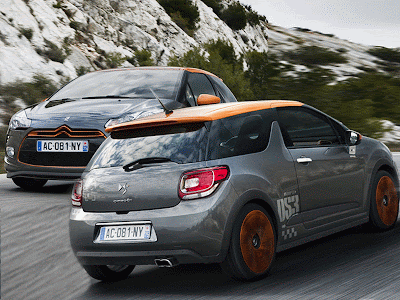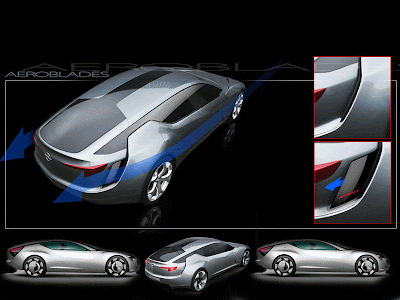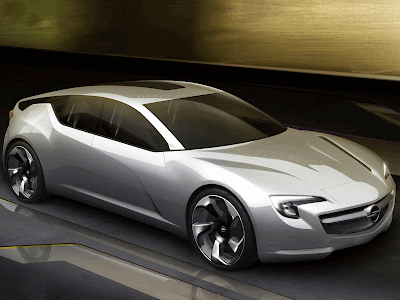Labels
- 106 (2)
- 107 (10)
- 1962 Lotus Elan (1)
- 1965 Lotus Europa (1)
- 1972 Lotus Esprit Concept (1)
- 1973 Lotus Elite (1)
- 2001 (2)
- 2002 Lotus Elise (1)
- 2002 Lotus Esprit V8 (1)
- 2004 Lotus Elise (1)
- 2005 Lotus Circuit Car (1)
- 2005 Lotus Elise (1)
- 2005 Lotus Exige (1)
- 2006 Lotus Europa S (1)
- 2006 Lotus Exige 265E Concept (1)
- 2007 JE Design Audi Q7 Wide Body Kit (1)
- 2007 Lotus 2-Eleven (1)
- 2007 Lotus Elise R (1)
- 2007 Lotus Elise S (1)
- 2007 Lotus Exige S (1)
- 2007 Lotus Hot Wheels Concept (1)
- 2008 Europa Diamond Edition (1)
- 2008 Lotus Elise SC (1)
- 2008 Lotus Elise SC Clark Type 25 (1)
- 2008 Lotus Europa SE (1)
- 2008 Lotus Exige Cup 260 (1)
- 2008 Lotus Exige S 240 (1)
- 2008 Lotus Exige Sprint (1)
- 2008 Lotus Ice Vehicle Concept (1)
- 2009 (35)
- 2009 AVUS Audi A5 Batmobile (1)
- 2009 Ferrari (2)
- 2009 Ferrari California (2)
- 2009 Ferrari F430 Scuderia (2)
- 2009 Lotus Eco Elise (1)
- 2009 Lotus Exige Cup 260 (1)
- 2009 PPI Razor GTR Audi R8 (1)
- 2010 (181)
- 2010 Audi A1 Worthersee Tour (1)
- 2010 Audi R8 Spyder (1)
- 2010 Cargraphic Audi RS6 (1)
- 2010 Ferrari (1)
- 2010 Ferrari 458 Italia (8)
- 2010 Ferrari 599 (1)
- 2010 Ferrari 599 GTB Fiorano (1)
- 2010 Ferrari 599 GTB Fiorano HGTE (1)
- 2010 Ferrari 599GTB HGTE (1)
- 2010 Ferrari 599XX (3)
- 2010 Ferrari 599XX Sports Car (1)
- 2010 Ferrari California (3)
- 2010 Hamann Ferrari 458 Italia (1)
- 2010 Lotus Elan Concept (1)
- 2010 Lotus Elise Concept (1)
- 2010 Lotus Elise SC Hertz (1)
- 2010 Lotus Elite Concept (1)
- 2010 Lotus Esprit Concept (1)
- 2010 Lotus Eterne Concept (1)
- 2010 Lotus Evora (1)
- 2010 Lotus Evora 414E Hybrid Concept (1)
- 2010 Lotus Evora Carbon Concept (1)
- 2010 Lotus Exige Cup 260 (1)
- 2010 Lotus Exige S (1)
- 2010 Lotus Exige S Type 72 (1)
- 2010 Novitec Rosso Ferrari California (2)
- 2011 (86)
- 2011 Ferrari 458 Challenge (1)
- 2011 Ferrari 458 Italia (1)
- 2011 Ford Explorer (1)
- 2011 Lotus Elise (1)
- 2011 Lotus Evora S (1)
- 2011 Mercedes-Benz C-Class DR 520 (1)
- 2011 Mercedes-Benz S63 AMG (1)
- 2012 (5)
- 2012 Ferrari 612 Scaglietti Successor (1)
- 2013 (1)
- 2014 (1)
- 206 (7)
- 207 (9)
- 3008 (1)
- 306 (11)
- 307 (1)
- 308 (5)
- 4007 (2)
- 407 (5)
- 44 magnums (1)
- 5008 (4)
- 599 (1)
- 599 concept (1)
- 599 details (1)
- 599 ferrari (1)
- 599 hybrid (1)
- 599 Hybrid Concept (1)
- 806 (1)
- 888 (1)
- ABT Releases Details on 510HP AS5-R Audi S5 Coupe (1)
- ABT SPORTSLINE AUDI R8 TUNING (1)
- AC (8)
- Ac Schnitzer (2)
- AC Schnitzer (2)
- AC Superblower (2)
- Accidents (1)
- acura (4)
- Acura (12)
- Acura RSX (1)
- Aftermarket (1)
- Airwaves Futuristic Compact City (1)
- Alfa Romeo (17)
- allye (1)
- alternative fuel cars (4)
- Amazing Customized Cars Of The Worlds3 (1)
- argentina (1)
- Artega (2)
- Ascari (2)
- ASI Ferrari F430 (1)
- Asia (1)
- aston martin (4)
- Aston Martin (21)
- Atomik Fiat 500 Abarth (1)
- audi (12)
- Audi (81)
- Audi / Allroad / 3.0 TDI 5-dr wagon (1)
- Audi / TT / S Coupe and Roadster range (1)
- Audi 200 (1)
- Audi 80 (1)
- Audi 90 (1)
- Audi A1 (1)
- Audi A3 Sportback (2011) (1)
- Audi A3 TDI Cars (1)
- Audi A3 TDI Sport Pics (1)
- Audi A4 ABS Llights (1)
- Audi A4 Avant Cars (1)
- Audi A4 Modifications (1)
- Audi A4 Modified (1)
- Audi A5 Car (1)
- Audi A6 - Brake (1)
- audi a6 avant (1)
- Audi A8 (1)
- Audi A8 Hybrid Concept (1)
- audi Cabriolet (1)
- Audi Cars (1)
- AUDI Girls (1)
- audi modification (4)
- Audi Q5 Second Hand Cars (1)
- Audi Q7 (2)
- Audi Q7 Gallery (1)
- Audi R10 Sports Cars (1)
- Audi R8 Arrives (1)
- Audi R8 Black Top Racer (1)
- Audi R8 getting twin-turbo V10 from RS6 (1)
- Audi R8 Pricing (1)
- Audi R8 Spyder (1)
- Audi R8 V8 / V10 / Spyder (1)
- Audi R8 V8 / V10 / Spyder / GT (1)
- Audi RS 4 Review (1)
- Audi RS3 (1)
- Audi RS5 (3)
- Audi RS6 (1)
- Audi RS6 wallpapers (1)
- Audi S3 (1)
- Audi S4 Gallery (1)
- Audi S4 Review (1)
- Audi S5 Review (1)
- Audi S5: K500 mod by MTM Audi S5 (1)
- Audi S6 (5)
- Audi S6 Review (1)
- Audi Sports Car (1)
- Audi TT Coupe (1)
- Audi TT with custom paint job at the 2008 (1)
- Audi TTS Coupe (1)
- Audi V8 (1)
- AURIS (1)
- Austin Healey (4)
- Auto Cyber Car (1)
- Auto Insurance (1)
- Auto Parts (1)
- AUTO SHOW (1)
- Automotive Wallpaper (1)
- Autos (1)
- Avus Performance Audi R8 exhaust modification photos (1)
- BABES (1)
- Bad Boy Bonnet (1)
- BB1 (1)
- BB1 Concept (2)
- beautiful girl (2)
- Beck (2)
- Bentley (11)
- Bentley Continental (2)
- Bentley Continental GTC (2)
- Benz (1)
- Bertone (1)
- best (5)
- big.evo.white (1)
- bikes (1)
- black (11)
- blue (5)
- Blue Djinn from Fastlane (1)
- blue Peugeot 307 HDI (1)
- bmw (8)
- BMW (63)
- BMW 320d (1)
- BMW 5-Series (1)
- BMW Concepts (2)
- BMW salvage cars (1)
- BMW Vision (1)
- bmw x5 (1)
- BMW X5 Security (1)
- BMW Z4 (1)
- body kit (1)
- British Ferrari (1)
- Bufori (4)
- Bugatti (9)
- Bugatti Veyron (3)
- Buick (4)
- Cadillac (14)
- Cadillac CTS-V Coupe (1)
- Camaro (1)
- Camaro SS (4)
- Capstone CMT (2)
- capsule (1)
- CAR (9)
- car 20cup (1)
- Car Buying (1)
- car for sale (12)
- Car Maker (1)
- Car Models (3)
- Car Modification (1)
- car satellite tv antenna (1)
- Car Show (1)
- Cardi Curara (2)
- CARLSSON (3)
- Cars (6)
- chassis technology (1)
- cheap (1)
- cheap blue Peugeot (1)
- chemical emissions (1)
- chevrolet (1)
- Chevrolet (30)
- Chevrolet Camaro (5)
- Chevrolet Cruze (1)
- Chevrolet Sonic (1)
- China (2)
- Chrysler (6)
- chrysler 300 (1)
- citroen (1)
- Citroen (1)
- Citroën (12)
- classic Ferrari (1)
- Classics (2)
- community (2)
- Concept Car (148)
- Concept Car (60)
- Concept Cars (3)
- Concept cars Design (1)
- Concept Cars Models (1)
- Concepts (7)
- Convertibles (1)
- Corvette ZR1 (2)
- Coupe (12)
- Coupes (2)
- Crossovers/CUVs (1)
- Custom Cars (1)
- custom peugeot (1)
- Cyber Cars (1)
- Dacia (2)
- Daihatsu (2)
- De Tomaso (1)
- De Tomaso Concepts (1)
- Delivers The RS700 (1)
- Delta concept (3)
- Design Car (96)
- design concept car (1)
- Designs (8)
- Detroit Auto Show 2011 (1)
- Diesel (4)
- Diesel Car (6)
- Diesel Engine Car (2)
- Dodge (10)
- dodge challenger (1)
- Dodge Viper (1)
- eco (1)
- Ecology (2)
- Edonis (2)
- electric (1)
- Electric Car (58)
- Electric Vehicles (1)
- elegan (1)
- elegant (3)
- Emerging Technologies (1)
- Engine Car (2)
- Enzo Ferrari (1)
- epure (1)
- Estate (2)
- Euro (1)
- Eurodata Peugeot Rally Car (1)
- EV/Plug-in (2)
- evo (1)
- Exotic Audi R8 outshines stars (1)
- extrime (1)
- F1 (5)
- F1 Drivers (1)
- fast (6)
- Fast car (8)
- Felipe Massa (1)
- Fenix (4)
- ferarri (1)
- Fernando Alonso (1)
- Ferrari (52)
- ferrari 2010 (1)
- Ferrari 2010 cars (1)
- Ferrari 288 GTO (1)
- Ferrari 308 GT4 (1)
- Ferrari 360 Review (1)
- Ferrari 365 GTB/4 (1)
- Ferrari 430 Scuderia (1)
- Ferrari 430 Scuderia Coupe (1)
- Ferrari 430 Scuderia Edizione (1)
- Ferrari 430 Scuderia Specifications (1)
- Ferrari 456GT (1)
- Ferrari 456M (1)
- Ferrari 458 (6)
- Ferrari 458 Italia (15)
- Ferrari 458 Italia Configurator (1)
- Ferrari 458 Italia First Drive (1)
- Ferrari 458 Italia Review (1)
- Ferrari 458 Italia Speed (1)
- Ferrari 458 Italia Spider (2)
- Ferrari 458 Italia Spyder (1)
- Ferrari 458 Italia tuning (1)
- Ferrari 512 BB (1)
- Ferrari 550 Barchetta (1)
- Ferrari 599 (3)
- Ferrari 599 Fiorano HGTE (1)
- Ferrari 599 Fiorano HY-KERS (1)
- Ferrari 599 GTB (3)
- Ferrari 599 GTB Fiorano (1)
- Ferrari 599 GTO (6)
- Ferrari 599 XX (4)
- Ferrari 599s (1)
- Ferrari 599XX (3)
- Ferrari 612 GTO Concept (1)
- Ferrari 612 Scaglietti (1)
- Ferrari Alternative (1)
- Ferrari Auction (1)
- Ferrari California (5)
- Ferrari California 2009 (1)
- Ferrari California Modified (1)
- Ferrari California pictures (1)
- Ferrari California Tuned (1)
- Ferrari Car (3)
- Ferrari Cost (1)
- Ferrari crash (1)
- Ferrari Daytona (1)
- Ferrari Enzo (3)
- Ferrari Enzo XX (1)
- Ferrari F1 (1)
- Ferrari F10 (1)
- Ferrari F355 (1)
- Ferrari F355 pictures (1)
- Ferrari F355 Review (1)
- Ferrari F430 (2)
- Ferrari F430 Challenge (1)
- Ferrari F430 GT2 (1)
- Ferrari F430 GT3 (1)
- Ferrari F430 Scuderia (1)
- Ferrari F70 (1)
- Ferrari FF (1)
- Ferrari Fiorano (1)
- Ferrari for sale (1)
- Ferrari FXX (1)
- Ferrari FXX Cars (1)
- Ferrari gold convertible 599 (1)
- Ferrari Hot Babes (1)
- Ferrari Hybrid (2)
- Ferrari Hybrid 2015 (1)
- Ferrari latest car concepts (1)
- Ferrari news (1)
- Ferrari one-off 599 (1)
- Ferrari picture gallery (1)
- Ferrari Pictures (1)
- Ferrari Reveals 599 GTO (1)
- Ferrari Sales (1)
- Ferrari Scuderia Spider 16M (2)
- Ferrari Speical Edition (1)
- Ferrari SUV (1)
- Ferrari Videos (1)
- Ferrari Wallpapers (2)
- Ferrari's 2009 model (1)
- Ferrari's custom 599 (1)
- Ferrari's Massa (1)
- Ferrari's new 458 Italia (1)
- Ferris Bueller (1)
- fiat (1)
- Fisichella (1)
- ford (3)
- Ford (21)
- Ford Mustang (13)
- Ford and Geely Hit "Snag" in Volvo Deal (1)
- Ford Focus (1)
- Ford Model T (1)
- Ford Mustang (1)
- Ford Saleen (1)
- Ford Videos (1)
- friendly (1)
- fuel cell cars (3)
- Full Cell (2)
- future (1)
- FUTURE CAR (1)
- Future Models - Audi 2009 Cross Cabriolet Quattro (1)
- Galleries (2)
- Geely (1)
- Gemballa Super Sports Car MIG-U1 Ferrari Enzo (1)
- Geneva Motor Show (13)
- germany car design (1)
- Green (4)
- Green Daily (2)
- GT-R (2)
- GTI (3)
- Gumpert Apollo (2)
- Hamann (2)
- Hearts Peugeot Concept (1)
- Heffner Audi R8 Twin Turbo (1)
- Heynsdyk (2)
- Hidrogen Full Cell (6)
- hoggar (1)
- Holden (1)
- Holden Special Vehicles (1)
- honda (1)
- Honda (25)
- HONDA (3)
- Hot Wheels (1)
- Hulme CanAm (1)
- Hummer (1)
- hummer 2010 (2)
- hybrid (6)
- Hybrid Car (39)
- Hybrid HDI (3)
- Hybrid Sports Concept (1)
- Hyundai (10)
- image (2)
- Import To Euro (1)
- In the Autoblog Garage (1)
- inch alloy wheels (1)
- Infiniti (11)
- Infiniti M (1)
- Insiders (1)
- Jaguar (13)
- JAGUAR (1)
- Jaguar Concepts (1)
- Jaguar.Sports Car' (2)
- Japan (1)
- japanese automaker (1)
- jazz (2)
- jeep wrangler (1)
- Keating (2)
- Keating TKR (2)
- Kia (8)
- KIA (2)
- Kia Ray (1)
- Kimi Raikkonen (1)
- Koenigsegg (4)
- Koenigsegg CCX 1 Black (1)
- korea (1)
- krum (1)
- Lamborghini (47)
- lamborghini murcielago (1)
- Lamborghini Murcielago (2)
- lamborghini murcielago car review (1)
- lamborghini murcielago pictures (1)
- Lamborghini Murcielago Show (1)
- Lamborghini Reventon (2)
- Lamborghini Scoops (2)
- Lamborghini Spiga (1)
- Lancia (1)
- Lancia Ypsilon (1)
- Land Glinder (3)
- Land Rover (4)
- large (1)
- Latest Audi uses Blackfin and SHARC processors (1)
- Legislation and Policy (1)
- Lexus (15)
- LEXUS (2)
- Limousine from Ferrari (1)
- Limousine From Ferrari (1)
- lincoln (3)
- Lincoln (10)
- LLC. (1)
- Lotus (15)
- Lotus Esprit (2)
- Luber (1)
- Luca Badoer (1)
- Lumma (2)
- LUXGEN (1)
- Luxurious Sports Car (6)
- Luxurious Sports Sedan (8)
- Luxurius Car (2)
- Luxury Car (1)
- mad max (1)
- Mansory (6)
- Manufacturing/Plants (1)
- Marussia (2)
- Maserati (6)
- MASERATI (1)
- Massa (1)
- Massa Ferrari (1)
- Maybach (3)
- Mazda (15)
- McLaren (12)
- Mercedes (8)
- Mercedes Benz (9)
- MERCEDES BENZ (2)
- Mercedes-Benz (23)
- Mercedes-Benz C-Class Special Edition (1)
- Mercedes-Benz CL-Class (1)
- Mercedes-Benz CL63 AMG (1)
- Mercedes-Benz Vito E-Cell (1)
- Metromorph (1)
- MG (7)
- Michael Schumacher (3)
- Milltek Audi RS6 Catback DUAL Stainless Steel Exhaust (1)
- MINI (1)
- Mini Cooper (2)
- Mitsubishi (10)
- MITSUBISHI (4)
- mixes car (1)
- MODEL (6)
- modifed (7)
- MODIFICATION (38)
- modification peugeot 206 (5)
- modification peugeot 306 (5)
- Modification Peugeot RCZ (5)
- modified (6)
- Modified (33)
- Modified Audi R8 at the 2008 (1)
- modifiedr (1)
- Morgan (2)
- Most Expensive Car Pictures (1)
- Motorcycles (1)
- Motorsports (1)
- Muscle Car (1)
- Mustang (3)
- MYBUS (1)
- Namir (2)
- Nc car sells (1)
- new 2010 (8)
- new 500 Cabrio (1)
- new bmw x5 (1)
- New Car (10)
- NEW CAR (6)
- New Cars (6)
- New Porsche Concept Car (1)
- NISMO S-Tune (2)
- Nissan (69)
- NISSAN GTR (2)
- nissan skyline (9)
- NOVITEC ROSSO (3)
- Novitec Rosso Ferrari California (1)
- Offbeat News (3)
- On Two Wheels (2)
- Opel (13)
- Opel Astra (2)
- Opel Concepts (2)
- Opel Videos (1)
- Opel Zafira (2)
- orange (1)
- Pagani (2)
- Pagani Zonda (1)
- Paris Motor Show (3)
- Peugeot (4)
- PEUGEOT (9)
- Peugeot 4007 (1)
- Peugeot 407 (2)
- peugeot 1007 (1)
- peugeot 107 (12)
- Peugeot 180 GTI (1)
- Peugeot 206 CC (23)
- Peugeot 206 gti (3)
- peugeot 207 CC (2)
- peugeot 207 sw (2)
- peugeot 3008 (2)
- Peugeot 306 (4)
- Peugeot 307 CC (9)
- Peugeot 307 HDI (1)
- peugeot 307 SW manufactured (1)
- Peugeot 308 (4)
- peugeot 4002 (2)
- peugeot 406 (2)
- peugeot 407 (3)
- peugeot 607 (1)
- peugeot 806 (1)
- Peugeot 907 (2)
- Peugeot 908 (3)
- peugeot car insurance (12)
- Peugeot Concept Car Gallery (1)
- Peugeot Concept Car spades (1)
- Peugeot Eurodatacar WRC (1)
- Peugeot Executive (10)
- peugeot Fire Engine Concept Car (1)
- peugeot french (2)
- Peugeot Hearts Alloy Wheel (1)
- peugeot hyundai (3)
- Peugeot Motor Company (1)
- Peugeot Rally Car (1)
- Peugeot RC Hybrid Electric (1)
- Peugeot RCZ (1)
- peugeot red (4)
- peugeot sport (18)
- Peugeot WRC (1)
- Peugeot WRC cars contest (1)
- picture (26)
- Pink (1)
- Pontiac (1)
- porsche (5)
- Porsche (40)
- Porsche Boxster (2)
- Porsche Carrera (4)
- Porsche Cayman (2)
- Porsche Panamera (2)
- production (2)
- Project Car (2)
- Prototype (14)
- prototype 599 hybrid (1)
- quark peugeot (2)
- Race Car (32)
- Race ready Audi R8 LMS displayed at he 2008 (1)
- Racing (8)
- Racing Car (14)
- RacingCar (6)
- Rally Car (2)
- Rally GT (2)
- Rallye (1)
- Range Rover Sport (1)
- Rare Ferrari (1)
- rcz (3)
- red (3)
- Red Audi R8 Wallpapers (1)
- Renault (9)
- RENAULT (1)
- RENAULT MEGANE (1)
- Rendered Speculation (1)
- rental peugeot (2)
- Reports (8)
- Review Car 2012 (1)
- Roadster (4)
- Roland Garros (1)
- roll royce (2)
- Roll Royce (3)
- ROXIMA HYBRID CONCEPT CAR (1)
- Rumormill (2)
- Saab (3)
- Saab 9-5 (1)
- Saab Videos (1)
- Saleen (4)
- Saleen S7 TT Smooth Running (1)
- Salon (2)
- Saloon (2)
- Scoops (3)
- scooter (1)
- Seat Ibiza (2)
- Sedan (26)
- Sedans/Saloons (2)
- SEMA (1)
- series (15)
- sexy (1)
- sexy girl (1)
- Sexy Girls (3)
- Shelby (6)
- Silhouette (1)
- silver (8)
- silver Peugeot 307 SW (1)
- Skoda (1)
- Skoda Fabia (1)
- Skyline (2)
- Special Ferrari 599 (2)
- speed transmisiosn (1)
- SpeedART (6)
- SpeedFactory (1)
- spesification car (37)
- spesification peugeot 407 (4)
- Spied: Audi A3 Cabrio on US shores (1)
- Spiess (2)
- Splinter (2)
- Spors Car (114)
- Sport Car (63)
- Sport Car Coupe (26)
- Sport coupe (12)
- Sport Sedan (12)
- Sport-Car (3)
- Sportcar (4)
- Sportec Takes The Audi RS6 (1)
- Sports Car (289)
- Sports Saloon (6)
- Sports Sedan (15)
- Sports/GTs (2)
- Spyker (2)
- SSC Ultimate Aero Guinness World Records (1)
- Subaru (3)
- SUBARU (5)
- Super Car (22)
- Super Cars (25)
- Super Sport Car (9)
- Super Sports Car (16)
- Super Sports Cars (10)
- Supercars (29)
- Supersport Car (10)
- Surpasse V (2)
- SUV (2)
- Suzuki (2)
- SUZUKI (1)
- Suzusho (2)
- Suzusho Surpasse V (2)
- Tesla (8)
- The Jaguar XJ - The Luxury Sports Car (1)
- Top 10 Ferrari (1)
- top 10cars (1)
- toyo tires-2000 Sport Utility Vehicles (1)
- toyota (1)
- Toyota (28)
- Toyota Scoops (1)
- Toyota Yaris (1)
- transparan (1)
- trike (1)
- Tuners (1)
- Tuning (20)
- Turbo (4)
- UK (1)
- Ultima (1)
- uniquee (4)
- USA (1)
- V10 (6)
- V12 (4)
- V6 (6)
- V8 (14)
- Vauxhall (3)
- Vauxhall ECO Diesel (1)
- Venturi (2)
- Video (4)
- viper (1)
- Volkswagen (14)
- Volvo (4)
- VOLVO (3)
- wallpaper (8)
- wallpaper peugeot (3)
- white (16)
- Yamaha (2)
- Zenvo (2)
Sunday, 28 February 2010
2010 Citroen DS3 Racing Car Limited Edition
Citroen plans to unveil a limited edition of the Citroen DS3 next month at the Geneva Motor Show. The Citroen DS3 Racing is a suped up version of the company's luxe supermini. While only 1000 units will be built, Citroen Australia General Manager, Miles Williams said that local availability for the special DS3 Racing will be announced when the regular DS3 launches in August.
2010 Citroen DS3 Racing Car Limited Edition
“The Citroen DS3 Racing represents an outstanding concentration of behind-the-wheel thrills with an artful blend of performance and efficiency. The DS3 Racing provides a clear indication of what we can expect when the DS3 arrives in Australia in August.” Mr Williams said.
2010 Citroen DS3 Racing Car Limited Edition
Developed by Citroën Racing - the winning team behind five WRC manufacturer's titles and six driver's titles for Sébastien Loeb and Daniel Elena - Citroën DS3 Racing is a special edition with a 100% sporting pedigree. Planned for the second half of 2010, the exclusive Citroën DS3 Racing will be limited to just 1000 production units.
2010 Citroen DS3 Racing Car Limited Edition
As such, the car's output has been bumped up by 30% to 200 PS (147 kW / 197 hp) using the turbocharged 1.6-liter THP engine. Torque is improved by 15% to 275 Nm (203 lb-ft). These changes were achieved by remapping the engine control unit, adjusting the turbo, and adjusting powertrain components.
2010 Citroen DS3 Racing Car Limited Edition
Meanwhile, stiffer suspension springs and new shock absorbers are also installed. The car has been lowered by 15mm, while both the front and rear track were widened by 30mm. Along with the new tires wrapped around the 18-inch wheels, the changes "all dramatically change the driving dynamics," according to a press release.
2010 Citroen DS3 Racing Car Limited Edition
To handle the extra power, the company installed four-piston caliper brakes up front and ventillated discs in back. Carbon-fiber touches are used on the new air diffuser, front bumper, lower body, and wing extensions. Chrome is also used at certain points, like the door handles and exhaust, with orange tint on the calipers, grille, roof, side mirror caps, and wheels. Inside, designers added carbon trim and orange inserts. Purposeful sport seats were also installed.
A Citroën DS3 Racing signature on the rear tailgate and an individually numbered identification plate fixed to the roof-lining further confirm the model's exclusivity.
2010 Citroen DS3 Racing Car Limited Edition
At 3.94-meters long, the grey and orange car will be shown in Geneva with checkered flaq and DS3 Racing graphics. Based on the existing DSport powered by the THP 150, production Citroën DS3 Racing editions will be finished in a special workshop and fitted with a parts kit developed according to Citroën Racing specifications. Only 1000 units of the Citroen DS3 Racing will be produced. The car will be released in the second half of 2010.
Peugeot 306 XSI 2.0
Peugeot 306

Peugeot 306 XSI 2.0 Clifford Cat 1 Alarm With 3 Key fobs one of which is the master key fob also a Toad Multipoint Immobiliser Full Ecosse Bodykit with Porsche style splitter and spoiler with brake light delocked, dehandled and debadged with TVR style poppers 3.5k ICE including DVD player and full boot build Momo steering wheel and limited edition 306 stainless steel gear knob blue neon’s under foot wells as well as a full under car neon kit which is multi function and colour £0000s spent and is a real head turner.
White Peugeot 306 body styling
PEUGEOT 306

The White Peugeot 306 body styling rear light kit uses the latest technology DUEL LED lights.
pleace comment White Peugeot 306 body styling
Saturday, 27 February 2010
The Peugeot 306 Afterburner
PEUGEOT 306

The Peugeot 306 Afterburner is produced in injection moulded plastic. The kit includes all bulbs and connectors needed to fit the kit
Peugeot 306 Afterburner LED rear lights conversion
Audi unveiled the new R10
It's official - Audi will become the first manufacturer to compete for the overall victory with a diesel engine at the most famous sportscar race in the world - the 24 hours of Le Mans.
Audi unveiled the new R10, its successor to the brilliant R8, today in Paris. The engine is a marvel - a 5.5-liter, all-aluminum v12 twin-turbo TDI. It develops 650 hp and more than 1,100 Nm torque - more power than the R8.
The best news, especially for North American motorsports fans? The R10 will make its competition debut at the 12 hours of Sebring in March. In the picutre above, a smiling Tom Kristensen (a multiple Le Mans winner in the R8) seems pretty happy with his new ride.
Truly a ground-breaking machine. Full press release after the jump.
Audi R10 world premiere in Paris:
V12 TDI engine produces over 650 hp
First test successfully completed
AUDI AG is once again one step ahead of the opposition: The inventor of �TDI� will become the world�s first automobile manufacturer to fight for overall victory with a diesel engine at the famous 24 Hours of Le Mans. The all-new Audi R10, which was unveiled on Tuesday in Paris, is powered by a totally new 5.5-litre, twelve-cylinder bi-turbo TDI engine, which is extremely quiet and economical.
The Le Mans Prototype, with over 650 hp and more than 1,100 Newton metres torque, significantly exceeds the power produced by the majority of previous Audi racing cars � including that of its victorious R8 predecessor. Audi ventures into previously unexplored diesel-engine terrain with the V12 power plant manufactured completely from aluminium. As with the TFSI technology, which triumphed initially at Le Mans before being adopted for mass-production, Audi customers should benefit once again from the lessons learnt in motorsport.
�With the A8 4.2 TDI quattro, Audi already builds one of the most powerful diesel cars in the world,� explained Prof Dr Martin Winterkorn, Chairman of the Board of Management of AUDI AG, at the R10 presentation in Paris. �The Le Mans project will help our technicians to extract even more from TDI technology. Nowadays, every second Audi is delivered with a TDI engine. We expect that the percentage of diesel engines will be even larger in the future.�
The R10 prototype�s V12 power unit, which is equipped with two diesel particle filters, is hardly recognisable as a diesel thanks to the engine�s smooth running nature. The TDI engine�s specialities presented the Audi Sport engineers with a whole list of challenges. The injection pressure easily exceeds the 1,600 bar achieved in production cars. The usable power band lies between 3,000 and 5,000 revs per minute � an unusually low rev range for a racing engine. The driver must change gear in the R10 far less often than in the R8 because of the TDI engine�s favourable torque curve.
The enormous torque of over 1,100 Newton metres does not only make extreme demands of the R10 transmission system � even the latest generation of engine dynamometers at Audi Sport had to be re-equipped with special gearboxes capable of withstanding the unusual forces.
Additionally, radical changes to the chassis were also necessary. The Audi R10 has a significantly longer wheel base than the R8. The overly wide front tyres are, up until now, unique for a Le Mans Prototype. New technologies were also implemented during the development of the carbon-fibre monocoque. Chassis, engine and gearbox form an extremely rigid, fully stressed unit.
�The R10 project is the biggest challenge ever to have been handed to Audi Sport,� said Head of Audi Motorsport Dr Wolfgang Ullrich. �TDI technology has not been pushed to its limits in motorsport yet. We are the first to confront the challenge. The demands of such a project are accordingly high. Long-term technology partners such as Bosch, Michelin or Shell support us in our quest. Together we have the chance to write new chapters in the history books of motorsport and diesel technology.�
The new Audi R10 successfully completed its first test at the end of November. An extensive test programme, including the 12-hour race at Sebring (USA) on 18 March, is scheduled before the 24 Hours of Le Mans on 17/18 June 2006. The development team from Audi Sport is supported by Reinhold Joest�s squad, which also performed this task during the R8 project.
Audi R10 TDi is derived from the successful Audi R8,
2010 Opel Flextreme GT/E Concept with E-REV Drive System
Think of the Opel Flextreme GT/E concept as a bigger Chevrolet Volt (or Opel Ampera if you're European). The idea behind this concept, which will debut at the Geneva Motor Show (March 4 - 14, 2010), is to show how the Volt's extended-range electric vehicle drivetrain can be used in a larger vehicle, in this case a mid-size five-door hatchback. And it will boost the company's credentials as a leader in green technologies, offering expressive design with efficient environmental performance - and engineered with German precision.
2010 Opel Flextreme GT/E Concept with E-REV Drive System
In Opel's strategy for achieving more independence from fossil fuels, electricity plays a key role. The 4.7-meter long Opel Flextreme GT/E Concept illustrates how extended-range electric vehicle (E-REV) technology can be plugged into large or mid-size vehicles, as well as compact cars such as the upcoming Opel Ampera. Opel calls this strategy e-mobility unlimited: adapting the highly efficient E-REV drive system - which removes the limitations of battery-only power - to vehicles across all market segments. To enjoy zero CO2 driving emissions Opel-style, the Flextreme GT/E concept shows that size doesn't matter.
2010 Opel Flextreme GT/E Concept with E-REV Drive System
The purposeful design also enables the Opel Flextreme GT/E Concept to achieve a projected drag co-efficient of just 0.22, which helps it reach a 200 km/h-plus top speed as well as conserve energy and extend its driving range. Stand-out visual features include a low and wide stance, wing-shaped lights front and rear, a distinctive nose and grille, floating C-pillars and muscular, sculptured bodywork.
2010 Opel Flextreme GT/E Concept with E-REV Drive System
The clean, frontal styling features a low hood line and an extended nose section, which is clasped by wing-shaped, signature LED headlamps. These are deeply carved into the front fenders and across the hood line. The new trapezoidal grille execution is slim but bold. The prominent wing-shaped chrome bar carries a large Opel emblem, which doubles as a socket for charging the Opel Flextreme GT/E Concept's battery pack. The upper section of the grille is used to admit cooling air, the lower portion being covered by a translucent panel. The absence of additional air intakes allows a low frontal area for aerodynamic efficiency and also enables the Opel Flextreme GT/E Concept to meet future pedestrian protection requirements.
2010 Opel Flextreme GT/E Concept with E-REV Drive System
In profile, the Opel Flextreme GT/E Concept is distinguished by innovative, stubbed C-pillars. This floating design allows the glasshouse to be extended rearwards under the arching roofline, emphasizing the flowing lines of the side body. The car's dynamic character is further underlined by a fresh expression of Opel's signature blade motif, now a swooping swage line from the base of the C-pillar into the lower front fender. The translucency of the fixed glass panel in the center of the roof is adaptive, allowing sunlight to warm the interior in the cold of winter, but darkening for coolness in summer. A duct at the rear edge of the roof is for additional cooling of the battery and electronic components.
2010 Opel Flextreme GT/E Concept with E-REV Drive System
Integral to the Opel Flextreme GT/E Concept's expressive looks is the efficiency of the design execution. The small frontal area, low roof height (1308 mm) and a flat, enclosed underbody all enable the car to cleave the air with a minimum of disturbance. The 21-inch alloy wheels are relatively narrow, to reduce wind resistance, and fitted with 195/45, low rolling resistance tires. Clear, flush-mounted trim inserts also minimize air turbulence.
2010 Opel Flextreme GT/E Concept with E-REV Drive System
The Opel Flextreme GT/E Concept also explores the potential for active shape shifting. At speeds above 50 km/h, a vertical panel extends along the body from the air extraction slot behind each rear wheel-arch. These 350 mm-long side spoilers guide high-speed airflow around the rear corners of the car, further reducing the amount of turbulence.
2010 Opel Flextreme GT/E Concept with E-REV Drive System
Mass reduction measures for the body include the use of lightweight, carbon composite outer panels, polycarbonate window glazing and aluminum alloy structural components. Compared to conventional materials, these offer a 40 percent weight saving which further contributes to reduced energy consumption and an increased driving range.
The efficient concept also includes GM's ground-breaking E-REV drive system, already developed for the Opel Ampera. The Opel Flextreme GT/E Concept shows the versatility of this technology by displaying it in a larger, mid-size vehicle format.
2010 Opel Flextreme GT/E Concept with E-REV Drive System
Despite its greater size and a maximum speed of more than 200 kilometers per hour, the Opel Flextreme GT/E Concept is projected to offer performance similar to that of the Ampera: a battery-powered driving range of up to 60 km - with zero CO2 tailpipe emissions - and a total range of more than 500 km. Average fuel consumption is estimated at 1.6 l/100 km, with CO2 emissions of less than 40 g/km. Unlike a hybrid vehicle, the wheels of the Opel Flextreme GT/E Concept are powered at all times by electricity. For typical journeys up to 60 km, energy is supplied by a T-shaped lithium-ion battery pack located under the floor and rear seat.
2010 Opel Flextreme GT/E Concept with E-REV Drive System
However, unlike a battery-only electric vehicle, the Opel Flextreme GT/E Concept eliminates any possibility of range anxiety through fear of being stranded without power. The small gasoline engine/generator is seamlessly engaged to provide electricity whenever the battery's supply becomes depleted. In this mode, the driving range is extended to more than 500 km, until the plug-in battery pack can be recharged or the car is refueled. The motor in the electric drive unit delivers a substantial 370 Nm of instant torque, giving lively performance and projected zero to 100 km/h acceleration in less than nine seconds.
2010 Opel Flextreme GT/E Concept with E-REV Drive System
The Flextreme GT/E concept is a further step in Opel's unfolding strategy for the electrification of the automobile, which includes a wide portfolio of products using battery, extended-range, hybrid and fuel cell technologies.
2010 Opel Flextreme GT/E Concept with E-REV Drive System
Think of the Opel Flextreme GT/E concept as a bigger Chevrolet Volt (or Opel Ampera if you're European). The idea behind this concept, which will debut at the Geneva Motor Show (March 4 - 14, 2010), is to show how the Volt's extended-range electric vehicle drivetrain can be used in a larger vehicle, in this case a mid-size five-door hatchback. And it will boost the company's credentials as a leader in green technologies, offering expressive design with efficient environmental performance - and engineered with German precision.
2010 Opel Flextreme GT/E Concept with E-REV Drive System
In Opel's strategy for achieving more independence from fossil fuels, electricity plays a key role. The 4.7-meter long Opel Flextreme GT/E Concept illustrates how extended-range electric vehicle (E-REV) technology can be plugged into large or mid-size vehicles, as well as compact cars such as the upcoming Opel Ampera. Opel calls this strategy e-mobility unlimited: adapting the highly efficient E-REV drive system - which removes the limitations of battery-only power - to vehicles across all market segments. To enjoy zero CO2 driving emissions Opel-style, the Flextreme GT/E concept shows that size doesn't matter.
2010 Opel Flextreme GT/E Concept with E-REV Drive System
The purposeful design also enables the Opel Flextreme GT/E Concept to achieve a projected drag co-efficient of just 0.22, which helps it reach a 200 km/h-plus top speed as well as conserve energy and extend its driving range. Stand-out visual features include a low and wide stance, wing-shaped lights front and rear, a distinctive nose and grille, floating C-pillars and muscular, sculptured bodywork.
2010 Opel Flextreme GT/E Concept with E-REV Drive System
The clean, frontal styling features a low hood line and an extended nose section, which is clasped by wing-shaped, signature LED headlamps. These are deeply carved into the front fenders and across the hood line. The new trapezoidal grille execution is slim but bold. The prominent wing-shaped chrome bar carries a large Opel emblem, which doubles as a socket for charging the Opel Flextreme GT/E Concept's battery pack. The upper section of the grille is used to admit cooling air, the lower portion being covered by a translucent panel. The absence of additional air intakes allows a low frontal area for aerodynamic efficiency and also enables the Opel Flextreme GT/E Concept to meet future pedestrian protection requirements.
2010 Opel Flextreme GT/E Concept with E-REV Drive System
In profile, the Opel Flextreme GT/E Concept is distinguished by innovative, stubbed C-pillars. This floating design allows the glasshouse to be extended rearwards under the arching roofline, emphasizing the flowing lines of the side body. The car's dynamic character is further underlined by a fresh expression of Opel's signature blade motif, now a swooping swage line from the base of the C-pillar into the lower front fender. The translucency of the fixed glass panel in the center of the roof is adaptive, allowing sunlight to warm the interior in the cold of winter, but darkening for coolness in summer. A duct at the rear edge of the roof is for additional cooling of the battery and electronic components.
2010 Opel Flextreme GT/E Concept with E-REV Drive System
Integral to the Opel Flextreme GT/E Concept's expressive looks is the efficiency of the design execution. The small frontal area, low roof height (1308 mm) and a flat, enclosed underbody all enable the car to cleave the air with a minimum of disturbance. The 21-inch alloy wheels are relatively narrow, to reduce wind resistance, and fitted with 195/45, low rolling resistance tires. Clear, flush-mounted trim inserts also minimize air turbulence.
2010 Opel Flextreme GT/E Concept with E-REV Drive System
The Opel Flextreme GT/E Concept also explores the potential for active shape shifting. At speeds above 50 km/h, a vertical panel extends along the body from the air extraction slot behind each rear wheel-arch. These 350 mm-long side spoilers guide high-speed airflow around the rear corners of the car, further reducing the amount of turbulence.
2010 Opel Flextreme GT/E Concept with E-REV Drive System
Mass reduction measures for the body include the use of lightweight, carbon composite outer panels, polycarbonate window glazing and aluminum alloy structural components. Compared to conventional materials, these offer a 40 percent weight saving which further contributes to reduced energy consumption and an increased driving range.
The efficient concept also includes GM's ground-breaking E-REV drive system, already developed for the Opel Ampera. The Opel Flextreme GT/E Concept shows the versatility of this technology by displaying it in a larger, mid-size vehicle format.
2010 Opel Flextreme GT/E Concept with E-REV Drive System
Despite its greater size and a maximum speed of more than 200 kilometers per hour, the Opel Flextreme GT/E Concept is projected to offer performance similar to that of the Ampera: a battery-powered driving range of up to 60 km - with zero CO2 tailpipe emissions - and a total range of more than 500 km. Average fuel consumption is estimated at 1.6 l/100 km, with CO2 emissions of less than 40 g/km. Unlike a hybrid vehicle, the wheels of the Opel Flextreme GT/E Concept are powered at all times by electricity. For typical journeys up to 60 km, energy is supplied by a T-shaped lithium-ion battery pack located under the floor and rear seat.
2010 Opel Flextreme GT/E Concept with E-REV Drive System
However, unlike a battery-only electric vehicle, the Opel Flextreme GT/E Concept eliminates any possibility of range anxiety through fear of being stranded without power. The small gasoline engine/generator is seamlessly engaged to provide electricity whenever the battery's supply becomes depleted. In this mode, the driving range is extended to more than 500 km, until the plug-in battery pack can be recharged or the car is refueled. The motor in the electric drive unit delivers a substantial 370 Nm of instant torque, giving lively performance and projected zero to 100 km/h acceleration in less than nine seconds.
2010 Opel Flextreme GT/E Concept with E-REV Drive System
The Flextreme GT/E concept is a further step in Opel's unfolding strategy for the electrification of the automobile, which includes a wide portfolio of products using battery, extended-range, hybrid and fuel cell technologies.
Subscribe to:
Comments (Atom)


